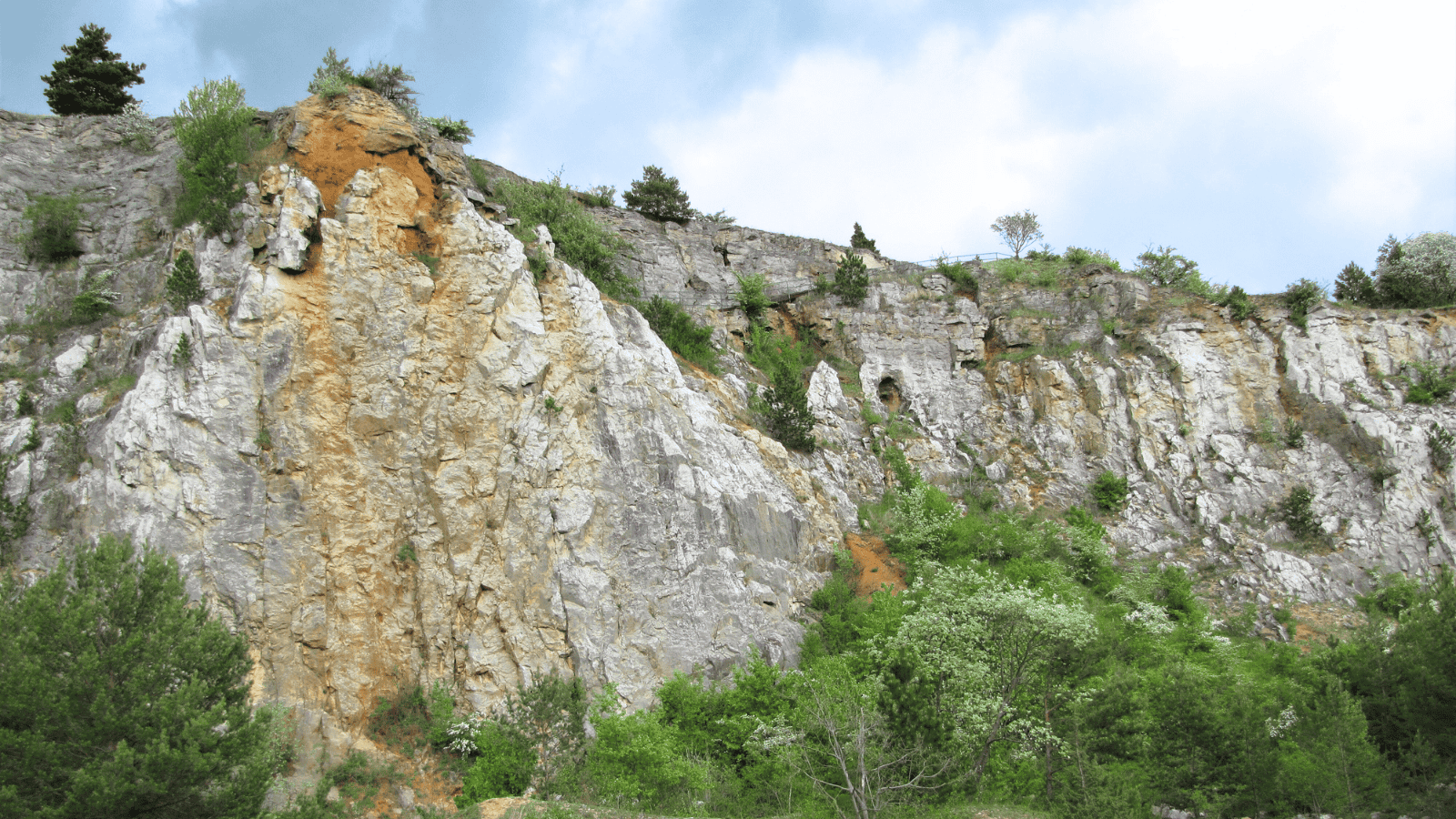In accordance with Sections 48 - 50 of Act 111/1998 Coll. on Higher Education Institutions and the Modifications and Amendments of Other Acts, I announce the rules of admission for entrance into the cross-border master study programmes at the Faculty of Science, University of South Bohemia in České Budějovice (hereafter FSci USB) for the academic year 2024/2025.
Article 1. Study programmes opened
|
Programme
|
Number of applicants admitted
|
|
Biological Chemistry
|
7
|
In the event that the quota of admitted students is not met in the main (summer) term or not all admitted students enrol, admission may be opened in the following additional (winter) term.
Article 2. Admission deadlines
- Main term
Applications may be submitted until 28 May 2025. Applicants must upload a transcript of courses taken during their previous studies into the e-application system by the same date at the latest. Proof of successful completion of the Bachelor's degree shall be submitted in the form specified in Article 4(1) no later than 9 June 2025, 11:00[1]. The entrance examination will take place on 16-19 June 2025.
- Additional term
Applications may be submitted from 15 September to 12 December 2025. The applicant shall upload the transcript of courses taken during the previous studies into the e-application system by 31 December 2025 at the latest. Applicants shall receive proof of successful completion of the Bachelor's degree in the form specified in Article 4, paragraph 1, by 4 February 2026, 11:00 a.m. [1] The entrance examination will take place on 6 February 2026.
For documents issued by a foreign university, the faculty reserves the right to request higher forms of verification or nostrification.
Article 3. Application submission
Applications must be submitted electronically using the form available at https://wstag.jcu.cz/portal/studium/uchazec/eprihlaska.html. A copy of the proof of payment of the application fee is a mandatory attachment to the e-application, unless the applicant pays by credit card directly from the application environment. The proof can be added to the e-application after the application has been submitted, but only until the end of the day on which the application was submitted. If the fee is not paid, the applicant shall be deemed to have withdrawn the application.
Article 4. Admission criteria
- A condition of admission is the completion of higher education at the Bachelor's level or higher - proof of attainment of this education (an officially certified copy of the diploma, for applicants from abroad certified documents of education and courses taken; the faculty reserves the right to request higher forms of verification or nostrification). Proof of such education issued by a university in the Czech Republic must be uploaded to the electronic application as a PDF file created by authorised conversion[2] or issued and electronically signed directly by the applicant's university no later than the deadlines specified in Article 2 of this Measure. The document issued by the foreign university with the appropriate verification shall be delivered by the applicant in person to the Study Department of the Faculty of Arts of the JU or sent by post to the Study Department of the Faculty of Arts of the JU, Branišovská 1760, 370 05 České Budějovice so that it can be delivered by the specified deadline (the date of delivery is decisive).
- At the same time, the applicant must have obtained at least 80 credits (ECTS) for courses in the field of chemistry and at least 15 credits (ECTS) in the field of biology with a weighted average of these courses not exceeding 2.0.
- Subject to the above conditions, candidates who meet the requirements set out in Article 4.1 or Article 4.2 may be admitted up to the number set out in Article 1 of this Measure. The ranking of candidates will be established in accordance with the rules set out in Article 4.1 par. 5.
- A candidate applying to a study programme in which he/she is already studying at the Faculty of Science cannot be admitted to this programme.
4.1 Entrance examinations
- The dean appoints an admissions committee whose members are associate professors, professors and academic staff with a scientific degree.
- The entrance exam consists of two parts:
(a) a knowledge test;
(b) an English language examination.
- The knowledge test consists of tests from:
(a) biochemistry;
(b) molecular biology;
(c) general, organic and analytical chemistry.
- The knowledge test is conducted on site and in English. On the basis of a written request from the candidate, the Vice-Dean for Studies may authorise the examination by distance learning on the basis of the opinion of the programme guarantor. The distance learning examination is conducted via the SCIO testing platform.
- The candidate must obtain at least 50 % of the points in each part of the examination. If the candidate commits cheating during the examination, the relevant test will be graded 0 points.
- The English language admission test verifies the applicant's language proficiency to at least B2 SERR level. The English language test can be replaced by a certificate. Certificates at level B2 and above according to the list of standardised examinations of the Ministry of Education, Youth and Sports are accepted. An official TOEFL ibT score of at least 72, a TOEFL ITP score of at least 543, a TOEIC score of at least 785, and an IELTS band 6.5 or higher are also accepted. Applicants do not need to submit the document if they have passed the final Bachelor's examination in English at the Faculty of Science of the University of South Bohemia with a grade better than or equal to "very good minus" or if they come from a country where English is the main language[3].
- Applicants, who have met the requirements set out in Article 4.2 will be given priority. A ranking list will be drawn up from the candidates who have met the requirements of paragraph 3 on the basis of the aggregate of their scores. Candidates will be admitted up to the number specified in Article 1. Any candidate with the same score as the last candidate determined by the number in Article 1 will also be admitted.
- Applicants, who submit a doctor's certificate proving their unfitness to sit the examination no later than the fifth working day after the scheduled date of the entrance examination will be invited to sit the examination organised in the same way as the examination on the original date.
Article 4.2. Admission without an entrance examination
A graduate of a bachelor's degree programme at the Faculty of Science of the University of South Bohemia who applies in direct temporal and disciplinary continuity with his/her bachelor's degree, has a weighted average for the entire study of no more than 1.90 and at the same time obtains a very good or better grade in the defence of his/her bachelor's thesis will be admitted to the master study in the Biological Chemistry programme without a professional entrance examination. At the Faculty of Science of the University of South Bohemia, the Biology and Biological Chemistry programmes are considered to be a disciplinary preceding bachelor's programme.
Article 5. Applicants with specific needs
Applicants with specific needs (disabilities, chronic illnesses or other health problems) have the right to make use of support measures and services provided by the University during the entrance examination and, if admitted, during their studies. If you wish to exercise this right, you must select YES in the "Taking into account specific needs" box on the online application form. Once the student has completed all the administrative formalities associated with the application for admission, staff from the Centre for Supporting Students with Specific Needs will contact him/her to inform him/her of the next steps. More detailed information can be obtained on the Centre's website (www.centrumssp.jcu.cz), by e-mail (centrum-ssp@jcu.cz) or by telephone (00420 389 036 026). It is also possible to consult with the Centre's staff about the suitability of a study programme before submitting an application.
Article 6. Admission fees
- The application fee is set at CZK 700.
Bank name: ČSOB, a.s.
Account: 104725778 / 0300
Variable symbol: 6020106
Specific symbol: electronic application number generated by the electronic application registration system.
- Fee for recognizing foreign studies is set at CZK 700.
Bank name: ČSOB
Account: 104725778 / 0300
Variable symbol: 6020406
Specific symbol: electronic application number generated by the electronic application registration system.
The application fee can be paid by the applicant by bank transfer, bank transfer or through the University of South Bohemia payment gateway.
The student submits a separate application for each course and pays the application fee for each application.
Article 7. Decision on admission/non-admission
- A decision on admission or non-admission will be sent to each applicant immediately after the overall ranking of applicants has been evaluated, or all the conditions necessary for admission have been met.
- If the applicant disagrees with the decision on non-admission to study, he/she has the right to appeal against the Dean's decision within 30 days from the date of delivery of the decision. If the Dean does not agree and does not change his/her decision, the appeal shall be referred to the Rector of the University of South Bohemia in České Budějovice for a decision. The decision of the Rector is final. The appeal must be justified on the grounds that the conditions set out in Articles 3 and 4 have not been correctly assessed. Otherwise, the appeal shall be deemed to be unfounded. For the necessary argumentation, the applicant has the right to consult his/her own documentation, which was the basis for the decision. He shall not have the right to consult the documentation of other candidates or the minutes of the selection boards.
These conditions for admission to study in the master's degree programme Biological Chemistry taught at the Faculty of Science of the University of South Bohemia in České Budějovice in English were discussed and approved by the Academic Senate of the Faculty of Science of the University of South Bohemia in České Budějovice on 26 January 2025.
České Budějovice,
prof. RNDr. František Vácha, Ph.D.
The dean of the Faculty of Science
[1] Applicants who have completed their bachelor's studies at one of the faculties of the University of South Bohemia
[2] Authorised document conversion is carried out, for example, by CzechPoint public administration contact points.
[3] Australia, English-speaking Canada, Ireland, New Zealand, United Kingdom, United States of America.
















